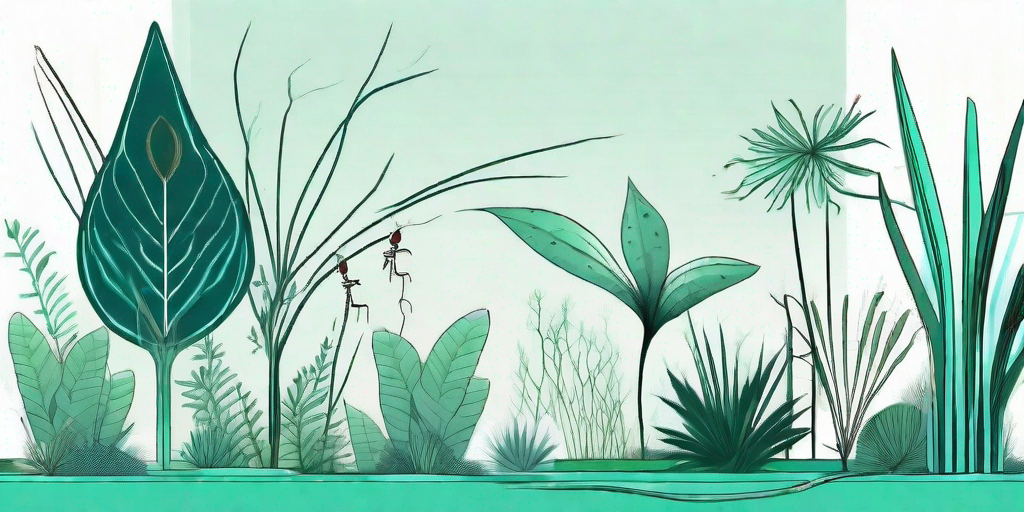
Welcome to the fascinating world of ant plants, where botany meets entomology in a symbiotic dance that is as captivating as it is complex. If you've ever wondered what happens when ants and plants decide to become roommates, then you're in for a treat. Buckle up, because we're about to dive into the secret world of ant plants.
What are Ant Plants?
Ant plants, also known as myrmecophytes, are plants that have a special relationship with ants. They provide ants with food and shelter, and in return, the ants protect the plants from herbivores and help to spread their seeds. It's a win-win situation, really. But let's delve a little deeper into this fascinating symbiosis.
Ant plants come in all shapes and sizes, from towering trees to petite perennials. They can be found in various parts of the world, but are most common in tropical and subtropical regions. These plants have evolved over millions of years to accommodate their tiny tenants, developing specialized structures such as hollow stems or swollen bases known as domatia.
The Benefits of Ant Plants
Ant plants offer a variety of benefits to their ant inhabitants. They provide a safe haven from predators and harsh weather conditions, as well as a steady supply of food in the form of nectar or specialized structures known as food bodies. In some cases, the ants even farm fungi within the plant for additional sustenance.
But the benefits aren't just one-sided. The ants offer the plants protection from herbivores, either by attacking them directly or by releasing chemicals that deter them. They also help to spread the plant's seeds, ensuring the continuation of the species. It's a classic example of mutualism, where both parties benefit from the relationship.
How to Grow Ant Plants
Now that we've covered the basics of what ant plants are and how they benefit from their relationship with ants, let's move on to the fun part: how to grow them. Growing ant plants can be a rewarding experience, offering a unique insight into the world of plant-insect symbiosis. But it's not without its challenges. Here's a step-by-step guide to get you started.
Choosing the Right Ant Plant
The first step in growing ant plants is choosing the right species. There are hundreds of different ant plants to choose from, each with its own unique requirements. Some popular choices include the bullhorn acacia, the ant fern, and the ant orchid.
When choosing an ant plant, consider factors such as the plant's size, growth rate, and care requirements. It's also important to choose a plant that is compatible with the ants in your area, as not all ants are suited to live in ant plants.
Planting and Care
Once you've chosen your ant plant, it's time to get planting. Ant plants can be grown from seeds, cuttings, or young plants. The planting process will vary depending on the species, but generally involves planting the seeds or cuttings in a well-draining soil mix and keeping the soil moist until the plant is established.
Ant plants require regular watering and feeding, as well as plenty of sunlight. They also require a colony of ants to thrive, so you'll need to introduce ants to the plant once it's established. This can be done by placing the plant near an existing ant colony, or by introducing a queen ant and allowing her to establish a new colony within the plant.
FAQs about Ant Plants
- Are ant plants harmful to humans?
No, ant plants are not harmful to humans. However, the ants that inhabit them can be. Some species of ants can deliver painful bites or stings, so it's important to handle ant plants with care.
- Can I grow ant plants indoors?
Yes, many species of ant plants can be grown indoors. However, they require plenty of sunlight and humidity, so they may not thrive in all indoor environments.
- Do I need to provide ants for my ant plant?
Yes, ant plants require a colony of ants to thrive. If you're growing an ant plant indoors, you'll need to introduce a queen ant and allow her to establish a colony within the plant.
Conclusion
Ant plants are a fascinating example of symbiosis in action. They offer a unique insight into the complex relationships that exist within the natural world, and can make a captivating addition to any garden. Whether you're a seasoned gardener or a curious novice, growing ant plants can be a rewarding and enlightening experience.
So why not give it a try? Unleash the secret world of ant plants and discover the wonders of this remarkable symbiosis. Happy gardening!















